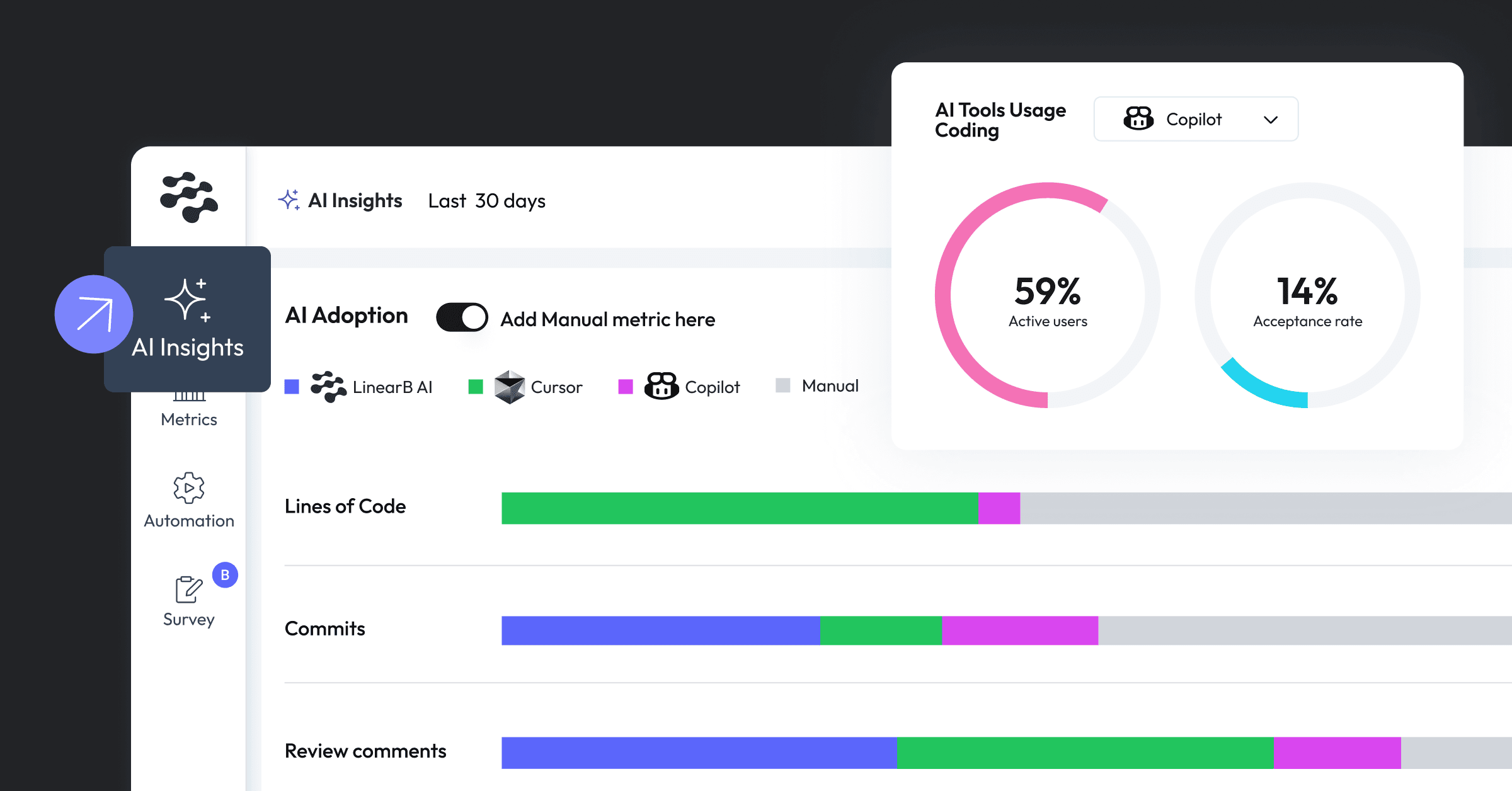Resource Center
Engineering Leader's Guide to Resource Allocation

Download
Align Engineering to Business Priorities

R&D leaders need to deliver
efficiency AND business results
The Blurred Line Between Engineering and Business Leaders
Software development is a distinct competitive advantage for every organization, so the lines get more blurred every day. Bottom line: Engineering leaders are leading businesses.
The Engineering Leader’s Guide to Resource Allocation covers how to focus engineering on driving business outcomes by:
Collecting and analyzing the right data
Reporting and soliciting feedback from business stakeholders
It’s impossible to build a culture of accountability and ownership
Setting strategy and improvement goals for resource allocation

Determine Total Cost of Engineering
Step one is to perform a detailed audit of your project management boards to see where all your work is being done and the total cost: actual monetary costs of dev salaries compared with project resourcing and opportunity cost of focusing on project ABC over project XYZ. Automatically pull this data in to ensure nothing is left behind.

Evaluate Investments and Projects
Step two is to identify/prioritize high impact work (the kind that attracts new customers or drives retention), bucket work into investment areas (like New Value or Keeping the Lights On), determine current alignment to business priorities, understand execution trends, and investigate the expected ROI of reallocation.
Basically you’re acting as the Rosetta Stone for business stakeholders.

Report Findings and Present Recommendations
Step three is to align stakeholders, form your strategy, and present your plan for moving forward.
You’ll want to include:
Investment profile for your teams vs. industry best practices
High/low impact analysis
Execution data (like DORA metrics)
Project resourcing, cost to date, and opportunity cost of reallocation
Establish a regular cadence of allocation/investment analysis, reporting, and presenting recommendations to key stakeholders.

Define Strategy and Set Your Goals
Now it’s time to put the plan in action. Set your target investment benchmarks and resource allocation strategy based on current trends, identified opportunities, business needs, and stakeholder feedback.
In addition to resourcing and investment profile, be sure to align your operational goals (covered in The Engineering Leader’s Guide to Building a Metrics Program) to your strategy.
Download The Resource Allocation Guide
Download Your Free Copy
More resources

Report
2026 Software Engineering Benchmarks Report
Created from a study of 8.1+ M PRs from 4,800 engineering teams across 42 countries.

Workshop
2026 Benchmarks Insights
Explore new AI insights from the 2026 Software Engineering Benchmarks Report – backed by 8.1M+ PRs across 4,800 engineering teams and 42 countries.

Demo
Understand AI adoption and developer impact with the AI Insights Dashboard
This demo guides you through the AI Insights Dashboard, demonstrating how to track and analyze trends in AI tool adoption, rule coverage, and code quality....